Matador Network's Blog, page 955
December 18, 2019
How to plan a bachelor party on Bach

Anyone who has ever tried planning a bachelor or bachelorette party knows it’s about as straightforward as getting a bill through Congress.
Endless discussions of Miami vs. Vegas vs. Austin vs. a yoga retreat to Mexico. Organizing hotels. Figuring out activities. Let’s not even get started on eating dinner. It’s basically an exercise in indecision that leaves whoever tried to organize it wanting to back out of the wedding entirely.
But a new app is trying to take at least a little of the headache out of the planning. Bach — pronounced “batch” and not like the German composer — debuted in September with the goal of streamlining the planning process as much as possible, and bringing some semblance of organization to the world of bachelor party chaos.
“We ran into a situation where these parties that were supposed to be fun turned into a giant headache,” says Greg Ramey, Bach’s co-founder and chief revenue officer. “People were experiencing the same problems and pitfalls, and when we realized people had the same pain points, we knew we could make something that was inherently viral and fun to use.”

Photo: Bach
Like with any organizing app, Bach begins with all members of the party or trip downloading the app.
The app will ask you to choose whether you’re planning a bachelor party, a bachelorette party, or a party “for everyone,” which we assume means one of those trips where both the bride and groom are present and nobody has any “we will never discuss this again” fun.
Bach then prompts you to select a location. Obviously, the app works for any city, but Bach also has half a dozen cities pre-programmed with activities, adventures, and dining experiences (more on those later). Right now those cities include stag party standards like Miami, Austin, and Las Vegas, but Ramey says they’ll be expanding that exponentially in the near future.
Pick the dates, tell Bach if you’re just planning the party or if you’re the bachelor(ette), invite people from your contact list, and it’s off to the races.
Inside the app you’ll find a handy, pre-party checklist in chronological order, with everything like setting the party dates, booking flights, all the way down to party games.
Past that, you’ll find a pre-planned list of activities in each city; stuff like a TAO bachelorette experience in Vegas or a beach party package in Miami. You’re able to book the excursions right on the app, and, more importantly, split the expenses in any way you see fit.
These activities, Ramey says, is how Bach monetizes this whole thing, buying them at wholesale and selling just below or at retail. Bach doesn’t have ads, and it’s free to use.

Photo: Bach
But perhaps Bach’s most useful feature is its expense tracker. Beyond just divvying up who paid for a pre-planned activity, it allows you to enter any expense you like, from hotels to dinners to penis-shaped paperweights, and split it among the crew. No more keeping track of who paid for what and who owes whom how much. Everyone enters their own expenses, and the app figures out all of that for you.
“It’s really attractive to a best man or maid of honor who are traditionally the ones leading this charge,” says Ramey. “Usually it’s one person who takes on the financial burden. Nobody wants to play cat and mouse, and especially when it’s a group where you [may not] know anybody.”
Though you cannot pay each other through the app yet, Ramey says that feature is also forthcoming. There’s also a chat feature, which, unlike traditional group chats, can end when the party is over and not drag on for months afterward running down your phone battery.
Ultimately, he says Bach will also allow you to book hotels, rental cars, and even floaty toys for a South Beach pool party. However, those features aren’t available yet.
“Everyone has a horror story and is looking for a solution,” he says, “and we’ve had incredibly positive feedback and response. The wedding business community is overwhelmingly positive as a whole, and this has been a space that no one has touched yet.”
Of course, Bach’s use isn’t limited to bachelor and bachelorette parties. Theoretically any guys or girls weekend, family vacation, away game, or group trip can take advantage of the features — especially once hotel booking and payment get rolling.
So, while nobody will ever be able to take ALL the hassle out of planning a bachelor or bachelorette party, at least Bach is trying to make it a little easier on everyone. 

More like this: How to plan a bachelorette party overseas
The post This new app aims to take the madness out of planning a bachelor(ette) party appeared first on Matador Network.

December 17, 2019
2010s restaurant industry news
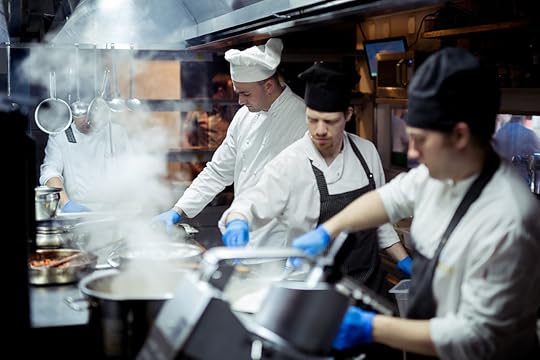
In the last decade, food culture underwent a seismic shift. Celebrity chefs became just as interesting as, and in some cases more important than, the food they prepared. Sure, we had Julia Child in the latter half of the 20th century, but the start of the 21st century saw the concept of the “chef personality” she pioneered in America explode in popularity: Anthony Bourdain and Gordon Ramsay became household names. Padma Lakshmi dominated reality television as the host of Top Chef. David Chang hosted two food-themed shows. Chef’s Table celebrated the craftsmen and women behind legendary restaurants. An entire show existed around the premise of becoming the next Food Network Star, and it birthed Guy Fieri.
This boom in chefs becoming celebrities had an unexpected consequence in the last decade: The more we got to know the people making the most celebrated food in America, the more we exposed the toxic culture that some had been cultivating since Escoffier implemented the brigade de cuisine system at the end of the 19th century.
In the 2010s, investigations into head chefs and restaurant owners uncovered an ecosystem where verbal and physical abuse, sexual assault, harassment, and misogyny flourish. In 2017, the #MeToo movement picked up steam across all industries, but none seemed more affected than Hollywood and restaurants. Restaurant empires were built on the backs of overworked and underpaid cooks and dishwashers who feared being fired if they talked about how they were treated. Post #MeToo, it became harder for the men who built those empires to lurk in the shadows.
This avalanche of revelations that restaurant kitchens are unsafe for marginalized people may seem like it happened suddenly, but it built up over the decade. Ten years of speaking out against sexism in restaurants, advocating for workers’ rights, and publicly calling out racism, homophobia, and other toxic behaviors led to a cascade of people who were fed up enough to say “no more.” The work isn’t done: As the accused continue to profit from their businesses or try to stage comebacks, it’s clear that restaurants still have a long way to go before they become safe and healthy work environments.
With this in mind, it’s clear that the most important trend of the last decade wasn’t an ingredient or a dish — it was accountability. Here are the standout moments from every year in the 2010s that are still defining how we eat today.
2010: The celebrity chef boy’s club continues to grow

Photo: Sam Aronov/Shutterstock
The early 2000s saw the explosion of countless TV chefs, from Bobby Flay to Gordon Ramsey to Jamie Oliver, but their fame was fairly contained to the Food Network and a few other reality competition shows. In the 2010s, though, chef superstardom exponentially grew outside of the Food Network, with more and more men dominating the scene.
At the 2010 James Beard awards, now-familiar faces were only just beginning to rise up: Tom Colicchio, host of Top Chef, which had debuted the previous year and would shoot up in popularity in the next 10 years, received the Outstanding Chef Award. Sean Brock, who opened Husk, the restaurant that would solidify his status as a celebrity chef, in 2010, won the same award for the Southeast region.
The Chef & Restaurant category gave 17 awards to men and just two to women: Koren Grieveson and Nicole Plue. Looking back on the 2010 awards now, it’s difficult to ignore the obvious exclusion of women chefs. People weren’t yet scrutinizing the boy’s club atmosphere of the restaurant world, where men were lauded for their accomplishments while most women toiled away in obscurity.
The next nine years would reveal painful truths about some of the chefs and restaurants that would soar in popularity in the next several years (Brock and Colicchio, thankfully, remained mere observers to the ensuing chaos).
2011: Lidia Bastianich lawsuit claims she “enslaved” employees

Photo: Debby Wong/Shutterstock
Since 1998, Lidia Bastianich had been a staple on public access cooking shows, where her maternal demeanor and family-style approach to Italian comfort food earned her a loyal following. She was also a forceful presence in the restaurant world. In 1998, her son partnered with Mario Batali to form the Batali & Bastianich restaurant group, and Lidia became a part-owner in addition to her two restaurants and the two television shows she hosted, “Lidia’s Italy” and “Lidia’s Family Table.”
Then, in 2011, her image as a family-orientated matriarch seemed on the verge of shattering: A former employee named Carmela Farina alleged that Bastianich treated her like a slave. Farina, a professional chef, claimed that she had been promised a role alongside Bastianich on her television shows. Instead, she became the full-time caretaker of Bastianich’s disabled neighbor.
Although the lawsuit was eventually thrown out, the disturbing incident seemed to reveal a culture of employee abuse at Batali & Bastianich. Lidia’s restaurant Felidia has thrice been accused of wage theft: in 2012, 2018, and again in 2019.
In 2012, Mario Batali and Lidia’s son Joe Bastianich reached a more than $5 million dollar settlement, which alleged that restaurants he owned engaged in the illegal practice of tip skimming — basically, upper management stole tips from powerless low-wage workers for nearly 10 years. In 2018, the lawsuit resulted in a $2.2 million payout to employees who say they were not paid a living wage.
Wage theft scandals at the Batali & Bastianich restaurant group seemed to foreshadow the next seven years. From here on out, it would become increasingly difficult for powerful restaurant owners to take advantage of their employees without consequences.
2012: Chick-fil-A founder unleashes anti-gay comments
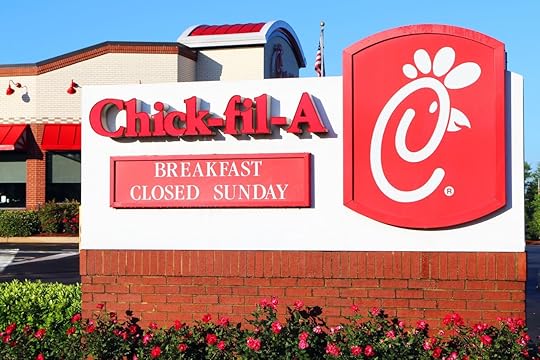
Photo: James R. Martin/Shutterstock
These days, it’s impossible to mention Chick-fil-A without being reminded that the fast-food chain is open about its anti-LGBTQ politics. The company, founded by S. Truett Cathy in 1967, has religious roots — all 2,300 of its outposts are closed on Sunday. The backlash against Chick-Fil-A’s politics took off in 2012.
That year, in an interview with a newspaper called the Baptist Press, Dan Cathy, the founder’s son, revealed that he believes in the “biblical family unit,” launching a national controversy. The incident revealed that the Cathy family regularly makes donations to anti-LGBTQ organizations, including the Marriage & Family Foundation and Exodus International, which not only opposed gay marriage but, in the case of the latter, also promoted conversion therapy for LGTBQ+ youth.
The chain’s views haven’t hurt business — it continues to attract fiercely loyal customers — but it might have put enough pressure on the company to rethink its public stance on politics: This year, Vox reported that in 2020, Chick-fil-A will only contribute to organizations that promote “youth education, combating youth homelessness, and fighting hunger.”
Elsewhere, in 2012, 200 employees at fast-food chains walked off the job to demand living wages, founding the Fight for $15 movement. The organization, which now includes laborers in other fields including adjunct professors and childcare workers, holds strikes demanding that low wage workers be allowed to form unions, get paid a minimum of $15/hour, and have access to pre-determined schedules that allow for doctor’s appointments and childcare emergencies.
2013: Paula Deen admits she uses racist language

Photo: carrie-nelson/Shutterstock
In the early aughts, Paula Deen had irresistible charm. She seemed like a jolly, friendly woman who gave her audience permission to eat more butter. In 2013, though, her image took a turn: While being deposed during a lawsuit brought against her by a former employee named Lisa T. Jackson, she admitted that she uses racial slurs when speaking about African-American people.
The controversy picked up speed from there: Jackson alleged that Paula and her brother, known as Bubba, unleashed racial and sexual tirades against her when she served as general manager of Uncle Bubba’s Seafood and Oyster House. The Food Network ultimately decided not to renew her contract, and for the first time in 14 years, Deen didn’t have a cooking show on the network.
Deen saw her world crumbling and appeared on The Today Show to tearfully insist that she’s not racist, but her reputation had been marred beyond repair. Americans felt disgusted and betrayed by her behavior, and they readily shunned her from public life. However, as culinary historian Michael Twitty noted in his 2013 open letter to Deen, “To be part of the national surprise towards you saying the word ‘n—’ in the past … is at best naïve and at worst, an attempt to hide the pervasiveness of racism, specifically anti-Black racism in certain currents of American culture.”
Regardless, Deen revealed that racism bubbled below the friendly face of even the most genial Americans, and that it especially thrived in restaurants, where people like Deen could exercise absolute power over the people who depended on her for their livelihood.
In 2014, Deen abruptly shuttered her restaurant before returning to The Morning Show in an attempt to stage a comeback, but no one was listening. Her downfall would signal the beginning of an era that exposed the discriminatory behaviors commonplace among chefs of all stripes.
Last year, Deen attempted a comeback with a show called Positively Paula on RFD-TV. She even tries vegan recipes. But the public made their ruling: Deen has never been able to recapture her former popularity.
2014: Tom Kerridge says women don’t have what it takes to be professional chefs, and Dominique Crenn fires back

Photo: hxdyl/Shutterstock
In 2014, British chef Tom Kerridge voiced an opinion prevalent among male chefs: Perhaps women simply are not cut out for the rigors of restaurant work.
“I like girls in kitchens a lot: It does bring that testosterone level down a little bit, it makes it not so aggressive,” Kerridge told the Radio Times. “But then at the same point a lot of that fire in a chef’s belly you need…That’s probably why there [are] not so many female chefs. They are out there; it’s just whether it’s the industry for them. I’m not sure, at that level.”
Kerridge’s dismissive, infantilizing, condescending comments were infuriating, but they seem to reveal a deeper truth about restaurants: Most of them aren’t welcoming spaces to women. One 2018 survey found that 49 percent of female restaurant workers received “offensive remarks” from their male colleagues while 75 percent reported an incident of sexual harassment during the first month on the job. However, according to the 2018 Women in Workplace report, only 54 percent of women think “reporting an incident would be effective and fairly addressed,” compared to 76 percent of men.
Dominique Crenn, who four years later would become the first woman in the United States awarded three stars by the Michelin Guide, responded to Kerridge’s comments, calling them “shallow, misogynistic,” and “absurd.” She asked him to consider how his words might discourage women who aspire to become professional chefs and lamented that in the current restaurant industry climate, she’ll always be considered a woman before a chef.
In the same interview, Kerridge admits that restaurants kitchens can get “very comfortable,” where “there is perhaps violence, where it perhaps feels threatening.” Perhaps unintentionally, Kerridge revealed that restaurant kitchens are toxic not just for women but for anyone who dreams of being a chef. Kerridge may not have been the first person to allude to the pitfalls of restaurant work, but he did manage to perfectly encapsulate that the operating norms within restaurants are unhealthy and in desperate need of an overhaul. Yet it would take a few more years before it came clear how common a culture of discrimination and abuse had become at restaurants.
2015: Indiana pizza parlor refuses to serve LGBTQ weddings

Photo: Rawpixel.com/Shutterstock
In 2015, an Indiana pizza parlor called Memories made headlines when it became the first business to embrace Indiana’s discriminatory “religious freedom” law. Although then-governor Mike Pence tried to reassure his constituents that the law would not allow businesses to openly discriminate, Memories Pizza, which identified as a “Christian establishment,” announced that it would deny catering services to LGBTQ weddings.
The pronouncement sparked outrage, echoing controversies in 2012 when bakeries refused to prepare wedding cakes for gay couples. Anyone who thought they could sit quietly and eat their pizza without having to reckon with the values of the people who made it were mistaken.
The Memories issue got people thinking about the role of restaurants in political debates: The owners of Memories insisted that because they paid the rent and made the pizza, they could operate their business however they see fit. Their detractors argued that discrimination is unacceptable no matter the circumstances. Do restaurants have a responsibility to imbue their food with their political beliefs, or should the two be kept separate? And do diners have an equally important responsibility to only patronize establishments that reflect their values? There are no easy answers. For what it’s worth, the restaurant is now permanently closed.
2016: Paul Qui arrested for domestic violence
Houston-based chef Paul Qui seemed like he was next in line to achieve celebrity chef status. He had restaurants in Austin and Miami, a James Beard award, and appeared on Top Chef. Then, in 2016, police arrested Qui for domestic violence (two years later, the charges were dropped). Qui headed to rehab immediately after his arrest, closed his flagship restaurant, apologized, and pledged that he wanted to move on with his career. But with the #MeToo movement revving up, the rest of the world wasn’t ready.
Qui’s arrest and subsequent search for redemption made people question why society takes abusive men back when we’re distracted by the next scandal. The discourse around the case focused less on Qui specifically. It instead tried to untangle what circumstances are acceptable to forgive a chef once accused of assault or abuse, as well as when or if people should welcome him or her back into the restaurant world without reservations.
Restaurant critics struggled with conflicting feelings over whether or not they should review his restaurants: Houstonia magazine argued that holding Qui accountable for his behavior meant refusing to patronize his establishment. Eater said the publication would cover news stories related to Qui but forgo reviewing his restaurants.
Though the Houston Chronicle ultimately gave Qui’s restaurant Aqui a four-star review in 2018, the chef never found his footing. Three of his restaurants, Aqui included, have closed since his arrest. In 2019, plans to open an outpost of his restaurant East Side King at a Denver food hall fell apart after backlash. These tangible consequences, in the words of the Dallas and Houston Eater editor Amy McCarthy, provided “a solid model for how to handle bad chefs now and in the future.”
2017: Reckoning for cultural appropriators and Mario Batali’s abusive behavior exposed

Photo: Sam Aronov/Shutterstock
Seismic shifts happened at restaurants across the country in 2017. For one, the conversation around cultural appropriation and gentrification at restaurants came to a head. One of the founders of a burrito cart called Kooks Burritos in Portland, Liz Connelly, admitted that on a trip to Puerto Nuevo, she and her business partner demanded that Mexican tortilla makers reveal their recipes, even going so far as to spy on them through their kitchen windows.
Facing backlash, Kooks quickly shuttered, but the controversy revealed an important aspect of the dialogue about cultural appropriation: The problem isn’t that chefs are cooking cuisine outside their own background. It’s that privileged white chefs with more access to community support and resources are making a profit from recipes and cooking techniques developed by indigenous and other marginalized people without giving credit or compensation.
Soon, however, the restaurant industry had to reckon with an even more horrific problem. Some of its most powerful figures were serial abusers. In December 2017, Eater broke the news that several women, three of whom were former employees of Batali’s, had accused the powerhouse chef of groping them.
Batali stepped down from his restaurant group and was fired from his hosting gig on The Chew soon after the allegations came to light, but it would take until March of 2019 for his partners to buy out his share in his restaurant group. Up until that point, he continued to make a profit from his restaurants. Batali, shamed and banished from the industry, slunk away to the shadows, and he was far from alone when it came to powerful men in the restaurant industry abusing their employees.
Ken Friedman, restaurateur and part-owner of beloved New York hot spot The Spotted Pig, faced disturbing allegations that he kept a “rape room” in the restaurant and sexually harassed women who were afraid to speak for fear they’d be blacklisted from the restaurant industry. Meanwhile, in New Orleans, John Besh stepped down from his restaurant group after an eight-month investigation found that he sexually harassed at least one of his employees and retaliated against her when she refused his advances.
With these abuses brought to light, the restaurant industry seemed to be taking its first painful steps toward eradicating widespread abuse. Even Anthony Bourdain had to admit that his beloved restaurant bible, Kitchen Confidential, had contributed to a ”phallocentric, very oppressive system.”
2018: Anthony Bourdain’s death spurns mental health conversations

Photo: Donald Bowers Photography/Shutterstock
The momentum from the past years continued into 2018, and real change seemed imminent: Dominique Crenn became the first woman in the United States awarded three stars by the Michelin Guide (a long time coming, but at least it finally happened). Saveur’s fall 2018 issue exclusively featured articles about women, written by women. The New York Times reported that Mario Batali considered a comeback (despite prominent figures in the food world, including Anthony Bourdain, strongly suggesting he permanently retire). The comeback never materialized.
The work was far from over, though: In The New Yorker, Helen Rosner wrote eloquently about how women are often forced to transform restaurants once helmed by abusers, thereby allowing men to drop into obscurity while women take responsibility for the mess they left behind.
The biggest shock of the year, however, came when news broke that Anthony Bourdain had committed suicide in France while filming Parts Unknown. His immensely tragic death spurned open and direct conversations about mental health among chefs and other restaurant professionals. Mental health conditions are often exacerbated or even catalyzed by the rigors of restaurant work, and the toxic, tough-guy culture of restaurants often prevents those in need from pursuing the help they need.
In the wake of his passing, notable figures across industries posted reminders that caring for our mental health should be a priority. A year later, the conversation about how to approach the epidemic of suicide and substance abuse issues within the food-service industry continues, emphasizing that restaurant workers will never be safe and healthy until these are issues are no longer the norm in professional kitchens.
2019: Where do we go from here?
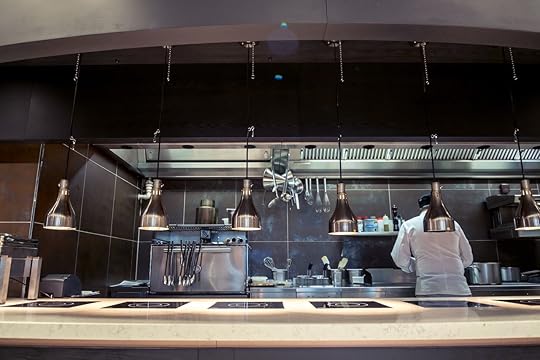
Photo: UfaBizPhoto/Shutterstock
In 2019, the momentum toward change over the last eight years died down.
Still, the seemingly untouchable Gordon Ramsay faced criticism on two fronts (first, for whitewashing a clumsy fusion of Chinese and Japanese cuisine at his restaurant Lucky Cat, then for attempting to outcook locals in places like Laos and Peru in his show Uncharted). Yet he’s far from losing his massive fan base.
It also started to look like Mario Batali, who had profited from his restaurant group until March of 2019, might face legal consequences for his actions. In May, reports indicated that the disgraced chef would face criminal charges for indecent assault and battery in Boston. But there’s no guarantee he’ll be convicted.
Still, in the past decade, restaurants have made great strides toward improving their work culture. The industry now expects more from its leaders, and expectations are higher that workers, regardless of their background, will get the respect (and wages) they deserve. There’s no doubt that the restaurant industry has been rocked to its core, but the question now is: Where do we go from here?
In the best-case scenario, we continue to hold those in power accountable for their abuses of power. We encourage women, people of color, and every other marginalized group to pursue restaurant and food-industry careers. We can’t give in to the feeling that it might be impossible to eradicate every bad guy, or pat ourselves on the back every time we achieve a small victory, as though the work is done. We cannot get complacent.
If there is one central lesson we can take away from 10 years of upheaval, it’s that we have just scratched the surface of unjust, untenable practices plaguing workplaces across the board — entertainment, media, restaurants. That might sound like a bleak statement, but it should actually give the people who love restaurants, chefs, and food hope. Uncovering injustice is the first step toward putting an end to it. 

More like this: With ‘Breakfast, Lunch, and Dinner,’ David Chang proves we don’t need a ‘new’ Anthony Bourdain
The post The defining moments that changed the food industry every year of the 2010s appeared first on Matador Network.

Picasso painting raffled for cheap

If you’ve always fancied yourself an art connoisseur but lacked the millions of dollars necessary to actually take the plunge into collecting, this Picasso painting might be a good way to get your feet wet. Aider les Autres, a Paris-based nonprofit, is raffling off tickets to own Nature Morte, a 1921 Picasso painting, for around $111. The painting depicts a newspaper and a glass of absinthe and has been on display at the Picasso Museum in Paris. It’s valued at over $1.1 million, so the lucky raffle winner will bring home the painting for an absolute bargain.
The raffle is part of a charitable initiative to raise money for Care International. Two-hundred thousand tickets are being made available for purchase, with the aim of raising up to $22 million. While some of these funds will be used to cover the cost of purchasing the painting, the rest will be donated to the charity for the purpose of building and restoring wells, washing facilities, and toilets in Cameroon, Madagascar, and Morocco.
According to Aider les Autres, “Besides the colossal waste of time, [women and girls] are at risk as they walk alone along remote paths and tracks. Girls are also more likely to miss school because of lack of hygiene, especially during their menstruation. By providing clean water, we will increase girls’ attendance by many thousands.”
Once the raffle’s winner is selected, he or she will receive certificates of authenticity signed by the artist’s children, Maya Widmaier-Picasso and Claude Ruiz-Picasso. Representatives of his estate believe Picasso himself would have supported the raffle, as he was impoverished himself upon his arrival in Paris. 

More like this: 12 pro tips for taking your kids to the museum
The post This Picasso painting is being raffled off for just over $100 appeared first on Matador Network.

The most unexpected ski resorts

When you think about where can you ski, places like the Alps, Vermont, or the Rocky Mountains may come to mind. Maybe even Japan or New Zealand. But you might be surprised to learn that great skiing can also be found beyond those famous places. Going off the beaten path will not only get you great skiing, but oftentimes unique cultural experiences and budget-friendly amenities as well. Here are seven of the best ski resorts located in unexpected places to ski this season.
1. Gudauri Resort, Georgia

Photo: Lizard/Shutterstock
The Caucasus Mountains are towering, steep, and snow-covered, so naturally you can find some awesome skiing here. The most international and biggest resort in the state of Georgia is Gudauri Ski Resort.
Like the rest of the Caucasus, at Gudauri you’ll find dramatic alpine views and great terrain, and unlike in the Russian Caucasus resorts, at an amazing value. The town is prepared to accommodate English speakers, and you can find ski lessons with fluent English speakers. The mountain itself has everything from beginner slopes to rocky chutes. While Gudauri’s 16 lifts give you access a big enough area to keep you busy, there’s even more to be found in the backcountry.
Don’t expect to spend much. It’s 14 euros ($15.60) for a lift pass for a day, and a big meal in the village will usually run you about 5 euros, or less than $6. And the food is hearty Georgian food like khinkali (dumplings) or khachapuri (bread with cheese inside).
2. Glenshee Ski Centre, Scotland

Photo: alan92 todd/Shutterstock
The Highlands in Scotland are celebrated by outdoor lovers for the rugged, green mountain landscape. But few people know that the famous green landscape also has a few skiable peaks covered in white in the winter months. The best place to take advantage of skiing in the British Isles is at Glenshee Ski Centre, the biggest ski area in Scotland.
Glenshee Ski Centre covers four mountains, with over 2,000 skiable acres and 25 miles of pistes with reliable snow-making. Glenshee is best for intermediates and beginners as it is flatter than other mountains on this list. It’s only two hours from Edinburgh by car, making it a doable day trip from the city. You can purchase a one-day adult pass for about $42.
At the mountain you’ll also find all the modern ski resort essentials including gear to rent and a ski school. You can have lunch or even afternoon tea on the mountain at the Cairnwell Café, one of the three places for food and drink at the resort. After skiing, you can find plenty of pubs for a pint or a whisky, as well as accommodations, in the nearby towns of Braeburn, Blairgowrie, and East Perthshire.
3. Karakol Ski Base, Kyrgyzstan

Photo: Darya Ponomaryova/Shutterstock
Located in the picturesque Tien Shan mountains with views of Issyk-Kul lake, Karakol Ski Base in Kyrgyzstan is in a stunning location. Much of the resort takes you through verdant pine forests, and fair weather skiers will appreciate the resort’s many sunny days. The dry conditions mean that powder is low in moisture and light; and you can find plenty of it off-piste and in the backcountry. Advanced skiers can also appreciate the amount of gladed (tree) skiing to be had. The resort’s triple and double chairlifts comprise the most modern lift system in the country.
You can find a few houses and small, no-frills hotels on the mountain, but for more accommodations and dining options stay in nearby Karakol town, just a 30-minute drive away. In town you can also find more English speakers, gear to rent, and cash machines. Note there are no ATMs on the mountain and they only accept cash. However, there are no cash machines at the base, so make sure you rent gear and cash in town before you go. At the mountain you’ll definitely feel like you’re in central Asia. The two restaurants serve typical Kyrgyz, Uighur, and Russian dishes.
For another way to take advantage of Tien Shan’s champagne powder, stay in yurt camps and ski tour nearby Karakol. Aksu Valley, Jyrgalan, and Ak-Tash all have winter yurt camps with cats and/or snowmobiles to take you to shredding through the mountains. Afterward, heat up in the cozy yurt camps, some equipped with hot springs and outdoor hot tubs.
4. Shymbulak Mountain Resort, Kazakhstan

Photo: Pikoso.kz/Shutterstock
Shymbulak is the biggest and most modern ski resort in Central Asia. It’s located just 30 minutes outside of Almaty, Kazakhstan’s biggest city. Here you can also experience the glorious Tien Shan Mountains, as well as a surprisingly charming city in the same trip.
Shymbulak is relatively small, but it does have two hotels (a small, six-room “boutique” hotel and a larger one at the base), a number of restaurants, gear available to rent, and a ski school. You’ll find pistes for all levels, and it’s a good starting point to access the incredible backcountry. A lift pass costs about $20 for adults on weekends, and about $15 on weekends.
When you’re not skiing, there’s a lot to do, including breathtaking paragliding. Lasting 15 minutes in winter and 30 minutes in summer, paragliding sessions start at 10,500 feet and land at around 500 feet. You can also ice skate at Medeu, which is the highest ice skating rink of its size in the world.
After or before your ski trip, we recommend exploring Almaty. Here you can get a taste for Kazakhstan’s unique culture as you explore the museums, delicious restaurants, numerous parks, and Western-style coffee shops.
5. Jasná, Slovakia

Photo: JASNÁ/Facebook
If you’re looking for value and some solid skiing, Jasná, Slovakia, is the mountain for you. The resort isn’t massive, but it does boast 28 lifts and 30 miles of pistes. Also, it’s about half the price of the resorts in the Alps and accessible by many low-cost flights. While you may pay over $50 for a lift pass on a December weekend, it’s much cheaper on weekdays and you’ll get discounts for multi-day passes. Also, you’ll pay less in lodging and food than at the Alpine resorts due west of here.
Just because it’s cheaper doesn’t mean it’s lacking in any way, though. Jasná has an updated lift system that accesses all kinds of skiing. At 6,500 feet, Jasná is at a lower elevation than the Alps so many of the pistes are cut through the woods. But if you like skiing above the treeline, Jasná does have a decently sized alpine area, and it’s also well-known for having great off-piste skiing.
It’s not as crowded as resorts in better-known European destinations, so powder runs don’t get skied out. That means you can often make fresh tracks for a few days after a snowfall, both in the off-piste in the alpine and in tree runs. Jasná is pretty steep so it best suits intermediate skiers and up. The village at the base doesn’t have a lot going on, but the nearby town of Liptovsky Mikulas has a happening nightlife and other activities like bowling, go-karting, ice hockey matches, and Tatralandia Aquapark.
6. Mount Parnassos Ski Centre, Greece
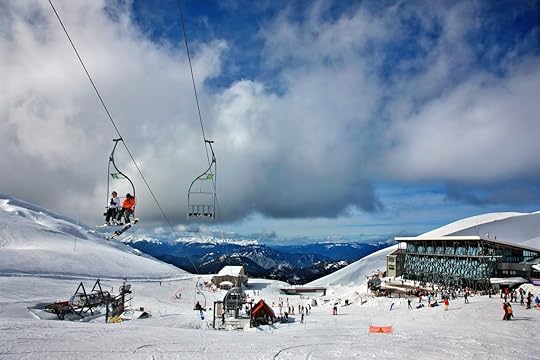
Photo: Heracles Kritikos/Shutterstock
Greece is most famous as a summer destination for tourists wanting to explore the ancient ruins and relax in the sun-soaked islands. But Greece should also be considered a winter destination. Mount Parnassos Ski Centre is about two and a half hours from Athens. Here, you can cruise beginner friendly to advanced slopes where Zeus created the human race anew and near where the Oracle of Delphi was located.
You can manage one day at Parnassos, if you wake up early and head back late to Athens. But you could also stay at relatively luxurious accommodations for less than $100 per night. Lift passes are less than $35 per day. Beyond that, you can enjoy excellent Greek cuisine while on the mountain.
Or you could eat light and go big on the après scene instead. Really, the best thing about skiing in Greece is the festive Greek atmosphere. So do consider staying the night and hitting up some bars in Delphi. Just be warned that skiing has become very popular in Greece. Mount Parnassos is the closest mountain to Athens and also the biggest, so be prepared for crowds and slightly higher costs during peak times.
7. Perisher Ski Resort, Australia

Photo: Perisher/Facebook
Perisher Ski Resort is well south of the equator, so if you’re all booked for this season, this may be the place to go next summer. You’ve heard of skiing in New Zealand and perhaps also Chile, but skiing in Australia should also be on your radar. In fact, most people would be surprised to learn that Perisher is the largest resort in the Southern Hemisphere.
One thing that makes Perisher so big is that it has four different areas to explore. It has over 40 lifts and over 60 miles of trails. Here they have slopes from beginner to advanced, and a massive terrain park. If you’ve wondered why Australia produces so many great snowboarders, you just need to look at its terrain parks — and probably its surfers as well — to see why.
The biggest issue for Perisher is that snowfall has been inconsistent year after year — so be sure to check into that before you pack up your travel ski bag in July. If there is snow, there’s something to be said for skiing with the lemony scent of eucalyptus trees in the air. Although Perisher is now owned by Vail Resorts, you can’t use your Epic Pass. (But the Australian Epic Pass does offer discounts to US resorts.) A one-day lift pass, which is the most expensive way to purchase one, is about $80. As for dining and lodging, you’ll find all the luxuries and comforts of any well-developed ski resort here. 

More like this: The ultimate guide to skiing in Bosnia and Herzegovina
The post The most unexpected, and awesome, places to ski around the world appeared first on Matador Network.

Groningen, Netherlands, travel ideas
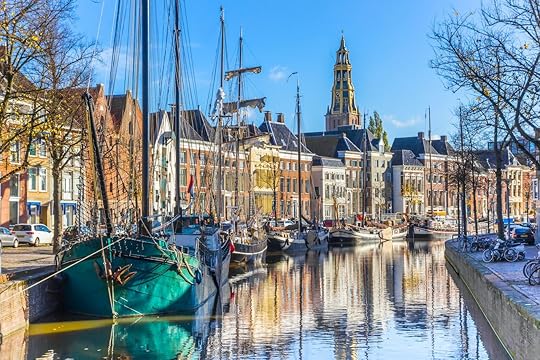
Stepping off the train at Amsterdam’s central station, you could be forgiven for thinking you’d just walked through the gates of Disney World. Masses of crowds push forward towards the exit, and when you finally do get outside into the fresh air, there are even more people in your way.
And while it’s a beautiful city with its romantic canals, exquisite architecture, and events going on every single night, the crowds — and constant action — certainly aren’t everyone’s cup of tea. Drunken bachelor parties staggering around with inflatable women can leave a visitor begging for some peace and quiet. For a quieter experience built on traditional Dutch culture, art, and food, head to Groningen. This university town in the north of the country is located in a quiet area far removed from the Randstad, and any real Dutchie will tell you this is where you’ll find the real Netherlands.
Take a break from the big-city vibe

Photo: Marc Venema/Shutterstock
Groningen feels remarkably different than its big-city counterpart to the south. Passersby speak in hushed tones, quiet enough that you can actually hear the sound of bike wheels turning on pavement and the bells of the Martini Tower ringing in the distance. The city center is home to museum-lined canal streets that, along with the city’s massive parks system, host many festivals throughout the year.
Despite the fact that the first known mention of Groningen was in a letter dating back to the year 1040, this is a city that feels youthful and hip. Students bike around town, cafes are filled with locals and tourists chatting over a koffie verkeerd, and the bars of the city center are always busy on Saturday nights. Yet Groningen still retains its historical past, allowing visitors to skip the crowds and visit a city that is still in touch with its authentic Dutch roots.
Visitors will find just as much to do
1. Spend a day at the museum

Photo: Groninger Museum/Facebook
No matter the time of year, start your trip with a visit to the Groninger Museum, right across the street from the central station. The building itself is a work of art, a colorful angular structure seemingly floating on the canal. Inside, the decor delivers, too, but if you’re more interested in the display than the design, this is a great place to learn about the history of Groningen and view a steady stream of exhibitions and modern art, including a tribute to the man who designed the museum, Alessandro Mendini.
Despite its strong focus on history — be sure to check out the pre-Christ earthenware mask — the museum is packed with imaginative works of art. Allow most of a day to thoroughly tour the building, with a break for lunch at the adjacent Mendini Restaurant. Admission costs 15 euros ($16.75). The museum is open Tuesday through Sunday from 10:00 AM to 5:00 PM.
Where: Museumeiland 1, 9711 ME Groningen
2. Enjoy a cinematic experience

Photo: Forum Groningen/Facebook
Just down the street from the Groninger Museum is the Groninger Forum. This movie theater is far too unique to show the typical Hollywood blockbusters. Instead, you’ll find documentaries, indie and foreign films with subtitles, and even live streams of shows, on occasion. In 2018, the theater streamed live ballet performances from the Royal Opera House in London.
For less than $12, you can enjoy a film that you likely wouldn’t see anywhere else, a great way to spend one of those inevitable rainy days in the Netherlands. Sit back, order a drink, and get in touch with your artsy side. The view from the roof is spectacular, so make sure to make your way to the top of this fascinating building.
Where: 9712 JG Groningen
3. Take in the view from the Martini Tower

Photo: Marc Venema/Shutterstock
Located on Groningen’s main square, the Grote Markt, or Martini Tower, stands at a menacing 318 feet high and can be seen from almost everywhere in the city. This tower has seen it all since it was built in 1482, especially conflicts, during which the tower has been damaged many times. A bullet hole, leftover scarring that occurred during the liberation of Groningen in World War II, can be seen in one of the bells. If you’re feeling brave, climb 250 steps up the d’Olle Grieze (Old Grey One) to take in a spectacular view of the city.
Where: Martinikerkhof 3, 9712 JG Groningen
4. Dig into traditional Dutch cuisine, beyond friet and mayo

Photo: P.S. koffie, thee & taart/Shutterstock
P.S. Cafe, just around the corner from the University of Groningen, is the go-to location for a warm drink and a sweet-tooth fix. The smell of coffee and cinnamon greets customers as they walk in the door, and the counter is lined with a variety of cakes and sweet treats. A big slice of their delicious carrot cake is absolutely recommended.
Alternatively (or if you want more) head over to Pure, a café that is famous for its scrumptious donuts and delicious homemade croissants. We highly recommend the red velvet cake if you don’t care about upping your pant size. Old brick walls line the interior of the shop, conjuring the type of hideout Ernest Hemingway preferred to hunker down in to jot in a leather-bound notebook.

Photo: AS Food studio/Shutterstock
Were a Groningen resident to invite you over for dinner, there’s a high chance that stamppot would be sitting on the table when you arrived. The dish is as hearty and filling as Dutch winters are cold and wet, consisting of potatoes typically mashed together with an assortment of vegetables, served warm and with meat. Gino’s is the best place to try Stamppot because the kitchen crafts multiple varieties — go traditional with carrots, onions, and potatoes, or spice it up with ingredients like sauerkraut.
For an authentic beverage experience, stop in for a drink at a Dutch “brown cafe.” These cafes are exactly as described, with walls and tables covered in brown wood. The best place to blend in with the locals is Cafe De Sigaar.
5. Take something home with you
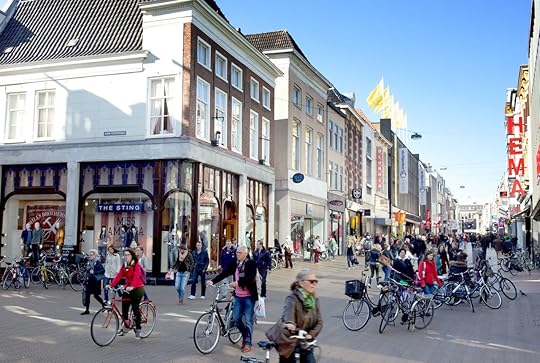
Photo: 100pk/Shutterstock
Along Folkingestraat, an alleyway-like street right in the center of town, you will find lesser-known clothing stores and boutiques. One of these unique shops is Baroche, a place so mysterious there isn’t even a sign on the front. Step inside and you will find hardwood floors, brick walls, and a kind shop owner willing to help you find the perfect attire.

Photo: mijnTafel/Facebook
You can also take a walk down the Herestraat, Groningen’s busiest and longest shopping street. Here, you’ll find places like Zara, H&M, Bershka, and The Body Shop. If secondhand shopping is more your speed, check out Mijn Tafel, a concept brought over from Finland. This maze of a store is full of shelves that people can rent to sell whatever they want, from clothing, kitchenware, and furniture to handmade art and everything in between.
6. Get some fresh air (unless, of course, it’s raining)

Photo: RubenTulaseket/Shutterstock
Vondelpark in Amsterdam is on every tourist’s to-do list, which is why you will always find it crowded in summer. In Groningen, the locals hang out at Noorderplantsoen, a big public park with a large pond in the middle. On those rare sunny days, you can befriend the students who lay on the grass, having barbecues and playing soccer. Every August, the park hosts the Noorderzon Festival, with music and art performances, as well as delicious Dutch street food.
If you’re looking for some alone time, wander over to the Prisentuin Gardens located right in the center of Groningen. The only thing separating this secret location from the big city surrounding it is a tall brick wall. Walking in here is like being transported to your own personal oasis, the madness of the world — and the hordes of tourists down south — left far behind. 

More like this: How to dive in to Amsterdam’s vibrant street art scene
The post As Amsterdam fills with crowds, head to Groningen for a more local feel appeared first on Matador Network.

Traditional Christmas dinners

Christmas comes with a few guarantees in the United States. Lights go up the minute Halloween decorations come down. Reindeer take up their posts on front lawns, and mall Santas man their stations in shopping centers, where Christmas albums play on repeat all month long.
When it comes to the big dinner, however, Americans never did settle on a menu. Some families rehash Thanksgiving with turkey anchoring the table. Others roast duck or goose. Still others serve glazed ham, prime rib, or General Tso’s chicken. Factor in regional sides, family recipes, and some seriously strong opinions about dessert, and the quintessential Christmas dinner can vary pretty dramatically between American families.
This year, take advantage of the holiday’s culinary identity crisis by incorporating dishes from these Christmas-loving countries, where yuletide brings one of the most anticipated meals of the year. The date may change, as do the dishes and traditions, but celebrants all across the globe can all agree on one thing: You can’t have festivities without food.
1. Philippines
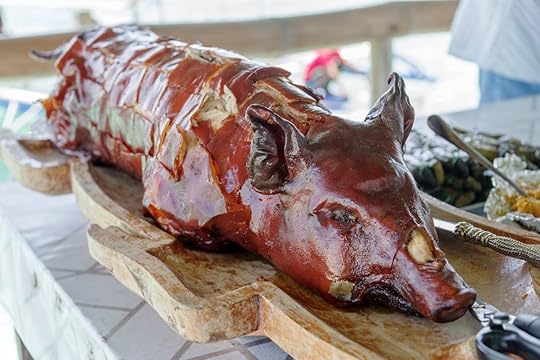
Photo: Kim David/Shutterstock
Christmas is serious business in the Philippines, the majority of which is Christian. The countdown to December 25 begins in September, the first of the “ber” months that mark the start of the holiday season, which finally wraps up each January.
Noche Buena is the main holiday meal, traditionally held after midnight mass as Christmas Eve slips into Christmas Day. Pork is bound to feature, either in the form of lechón (roast suckling pig) or Christmas ham. Accompanying dishes may include Pinoy-style spaghetti, a take on Bolognese with a banana-ketchup-sweetened sauce and hot dog pieces, or keso de bola, a ball of edam cheese. Though cheese is scant in Filippino cuisine, the red-wax-wrapped Dutch dairy product is ubiquitous on Christmas and eaten with pandesal bread.
Puto bumbong (black glutinous rice with coconut sugar) makes a perfect dessert for those with a mild sweet tooth. For a proper sugar rush, there’s leche flan or fruit salad, which is no ordinary bowl of berries in the Philippines. It’s a sweet, soupy dessert made with fruit cocktail and a condensed-milk-based sauce. Buko salad is another take that uses shredded young coconut.
2. Poland

Photo: Joanna Dorota/Shutterstock
In Poland, Christmas Eve dinner is an hours-long affair called Wigilia. The meal is meant to begin when the first star, the Star of Bethlehem, appears in the sky, and it kicks off with everyone in the family breaking off a piece of the the opłatek, or Christmas wafer.
Though early Wigilia celebrations featured an odd number of dishes, today’s dinners traditionally incorporate 12 dishes, one for each of the apostles and months of the year. Borscht (beetroot soup) is a holiday staple and may appear alongside other soups, like fish head, rye, or mushroom. Red meat is rarely served, but fish like carp, herring, and tench are inevitable. As are pierogies in true Polish fashion. Once everyone’s done feasting, it’s customary to exchange gifts under the tree on Christmas Eve, and some families end the night with midnight mass.
3. Mexico
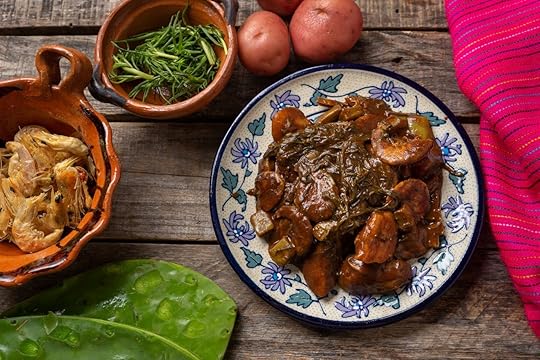
Photo: Playa del Carmen/Shutterstock
The lead-in to Christmas is just as special as the day itself in Mexico. Festivities begin on December 16 with Las Posadas, a nine-day celebration commemorating Mary and Joseph’s search for shelter on their travels to Bethlehem (posada means “inn”). The festivities typically involve Mexican Christmas carols, piñatas, candlelight processions, and lots of good eats, including tamales, pozole (hominy stew), and ponche Navideño (a type of mulled wine).
Like in the Philippines and many Latin-American countries, Christmas Eve’s Noche Buena is the biggest feast of the Mexican holiday season, which officially ends on King’s Day on January 6. Roast turkey often sits at the center of the table, sometimes slathered in mole, a rich, dark, chili-based sauce. Roast pork may take its place as the main protein.
Rounding out the meal are dishes like bacalao (salt cod) fritters, romeritos (seepweed sprigs, dried shrimp, and potatoes in mole), and ensalada de Noche Bueno (salad with beets, oranges, jicama, cilantro, and other seasonal produce). Wedding cookies and buñuelos (fried dough) hit the spot when it comes time for dessert, and there’s always rompope, Mexican eggnog.
4. Australia

Photo: Maksim Toome/Shutterstock
Roast dinners used to be standard Christmas fare in Australia, but in recent years, barbecues have won out in popularity. After all, Christmas is a summer holiday Down Under. Whether families throw more meat or seafood on the barbie varies by region, but lamb, sausages, ham, prawns, and barramundi are all classic options. Really, anything goes as long as there’s enough beer to go around. Sides generally include cold cuts, oysters, and salads that reflect the season’s freshest fruits and veggies (cherries are particularly popular around Christmas).
Though traditionalists may serve plum pudding for dessert, pavlova has become the sweet face of Aussie Christmas. The meringue-based dessert is light and delicate, crisp on the outside yet slightly chewy, and perfect for hot summer days topped with berries and whipped cream. Not just enjoyed on Christmas, pavlova is celebratory dessert in both Australia and New Zealand.
5. Italy

Photo: Roxana Jifcovici/Shutterstock
Christmas menus look different in Naples than they do in Bologna, but there are a few rules most Italian families follow. First, Christmas Eve dinner should be seafood-based. Southern Italy originated the now-Italian-American Feast of the Seven Fishes, or La Vigilia, which turns the night of the 24th into a seven-dish seafood extravaganza following a day of fasting. The next day, on Christmas, families swap recipes like linguine with mussels and baccalà (baked salt cod) for meat-heavy dishes like lasagne alla Bolognese and braciole (rolled, filled flank steak).
Most famous of all is Italy’s classic Christmas bread, panettone. Panettone is a sweet loaf filled with candied and dried fruit. Originally from Milan, it’s now enjoyed across the country come Christmas, although Verona has its own version. Called pandoro, the Veronese loaf is star-shaped, has no added fruit, and comes dusted in powdered sugar.
6. Japan

Photo: image_vulture/Shutterstock
Though the majority of Japanese citizens practice Shintoism, Buddhism, or both, many acknowledge Christmas as a cultural holiday. It makes sense, then, that Japan’s traditional Christmas dinner is the result of a marketing ploy. It all started when the former manager of the first KFC, and later CEO of the company, saw an opportunity to advertise chicken dinners in Japan as an alternative to the Western turkey dinner. Now, millions of families participate in Japan’s Kentucky Fried Christmas, with many ordering KFC’s special Christmas dinner in advance due to the high demand. Others may simply celebrate the occasion with a nice dinner, much as they would a birthday or anniversary.
7. Ethiopia

Photo: bonchan/Shutterstock
In the Ethiopian Orthodox tradition, Christmas is celebrated on January 7 (when Christ was born according to the Julian calendar). The holiday is known as Ganna, and it’s customarily preceded by a 40-day advent fast. On Christmas Eve, the fast culminates in a massive meal that typically features doro wat as the main dish. Wat refers to stew in Ethiopian cuisine and typically contains beef, lamb, or chicken, and an assortment of veggies. On Christmas Eve, rooster meat is often substituted for chicken and carved into 12 pieces in honor of the apostles. (Twelve hard-boiled eggs may also be served.) The meal is served with national dish injera, a thin, spongy bread that can double as a serving platter. To wash it all down, Ethiopians drink tej, or “honey wine.”
8. Iceland

Photo: Fanfo/Shutterstock
Smoked lamb, or hangikjöt, signals Christmas dinner in Iceland, where merrymakers also pile their plates with veggies like potatoes, corn, peas, and cabbage. Ham or ptarmigan, a type of grouse, may serve as additions or alternatives to the hangikjöt, and there’s likely to be herring somewhere on the menu. Rye bread accompanies most meals in Iceland, Christmas included.
There’s another bread, however, that really steals the show during the holidays. Known as laufabrauð, or “leaf bread,” it’s actually thin sheets of fried dough with patterns cut out to look like leaves rather than a single, crusty loaf. Many families gather together to create the patterned dough as a holiday activity similar to baking Christmas cookies, though laufabrauð also comes store-bought. To quench their holiday thirst, Icelanders drink malt og appelsín, a non-alcoholic beverage made from a mixture of malt and orange sodas.
9. Brazil

Photo: Carla Nichiata/Shutterstock
Home to more than 200 million people, most of them Christian, Brazil is as lively as you might expect when Christmas rolls around. On Christmas Eve, nearly everyone in the nation stages a big feast with their family using ingredients native to the region. Though specific dishes vary, there is one uniquely Brazilian Christmas tradition: trading in roast turkey for Chester, a genetically modified super chicken, as the star of the meal.
Alongside the pumped-up birds, Brazilian families serve dishes like bacalhau (salt cod) fritters and farofa (a manioc or cassava flour mixture). Farofa has a bread-crumb-like texture and often incorporates bacon or other smoked meats, perhaps qualifying it a distant relative of stuffing. Given the summer heat when Brazil celebrates, the rest of the meal usually comprises fresh fruit- and vegetable-forward sides. For the proverbial cherry on top, Brazilians indulge in sweet treats like rabanadas, similar to French toast, and panettone. 

More like this: 7 creamy and boozy eggnogs made around the world
The post What Christmas dinner looks like around the world appeared first on Matador Network.

JetBlue 48-hour winter sale

With the excitement of the holidays in the rearview mirror, January is arguably the most dismal month of the year. Looking ahead, it may seem like there’s nothing but a prolonged hangover and bleak weather waiting for us, but this flash sale by JetBlue can alleviate your misery. This 48-hour sale, running from now through midnight on December 18, has flights as low as $44 to a variety of warm-weather destinations both domestically and internationally.
Here are some of our favorites:
Boston to Buffalo for $44
New York to Charleston for $59
Philadelphia to Boston for $64
Fort Lauderdale to Grand Cayman for $64
New York to Savannah for $74
Salt Lake City to Long Beach for $79
New York to Turks and Caicos for $94
The best part is that travel dates are valid from January 8 through March 31, 2020 — because February and March are no picnic either. Keep in mind the blackout dates, which are January 17 through January 20, and February 13 through February 24. Visit JetBlue’s website for a complete listing of destinations. 

More like this: The best places to travel this January
The post JetBlue has winter flights for as low as $44 appeared first on Matador Network.

The London Resort theme park

Anglophiles will be pleased to learn that plans for their personal utopia are in the works. The London Resort, a $4.5-billion theme park, is set to be built by the Thames estuary, in southeast England, in 2024. Much like Disney World, the park will be composed of various “lands” that each represent a slice of Britain. Although the park is still in its early concept stages, the first images give a sneak peek into what this new theme park might look like.

Photo: London Resort

Photo: London Resort
It appears that visitors will enter through a giant Union Jack glass dome before funneling into a traditional British High Street full of shops, restaurants, hotels, and a waterpark. Then, you can carry on to The Studio, a modern-day warehouse district; The Woods, an fantasy-esque park inspired by fables and fairy tales; and The Kingdom, where you’ll feel like you’ve traveled back to the Middle Ages, with Arthurian castles, sorcery, and even dragons. For an even heavier dose of fantasy, there’s also The Isles and The Jungle, where you can come into contact with mythical creatures and ancient ruins of a long-lost civilization. The final area is the Starport, which will fling visitors into the future to alien encounters and adrenaline-pumping rides.

Photo: London Resort
Although it was first proposed in 2012 and prolonged by delays, the park’s opening in 2024 now seems within reach. 

More like this: The 7 strangest theme parks around the world
The post The London Resort will be the UK’s version of Disney World appeared first on Matador Network.

Legends of the Hidden Temple reboot

Nineties kids have spent many an hour watching Nickelodeon’s Legends of the Hidden Temple and wishing they could compete to assemble the Silver Monkey. Well, the wait was long, but those now-grown-up kids will soon be able to watch the adventure show again. Quibi, a mobile-only streaming service, has announced that the fan-favorite competition adventure show will be rebooted, but this time it’ll be geared toward adults.
Dwayne Johnson isn't the only rock coming to Quibi. #LegendsOfTheHiddenTemple Quibi.
2020. pic.twitter.com/hadAmz6yK1
— Quibi (@Quibi) 16 décembre 2019
Familiar elements will return, like the all-knowing Olmec, the Moat Crossing challenge, and of course, the Temple Run, but there will also be some pretty noticeable changes. According to Entertainment Weekly, “The entire set will be taken out of the studio, into a jungle, and scaled up with tougher challenges and bigger prizes on the line.”
That means this version of the hit show might actually feel a bit more realistic.
The show’s first run lasted three seasons, from 1993 to 1995, but made a big enough impact on children that it drew widespread calls for a remake.
The reboot is expected to premiere at the same time as Quibi’s launch, on April 6, 2020. 

More like this: Nickelodeon has created Slime City, so you can live out your ‘90s-kid dreams
The post Adventure show ‘Legends of the Hidden Temple’ is getting a reboot for adults appeared first on Matador Network.

Mexico City’s eco-friendly rink

Public skating rinks are a winter tradition in many cities across the world, but they can also be a symbolic tool in the fight for increased sustainability. In Mexico City, the world’s largest skating rink just opened in its main square, but there’s something different about this particular rink — it uses no water or power, making it completely eco-friendly. Designed by Swiss manufacturer Glice, the rink has a surface that serves as an ecological alternative to refrigerated ice.
In contrast to conventional rinks, the one in Mexico City will save 49,000 gallons of water, which is the average monthly energy consumption of 4,000 households, and 95 tons of CO2 emissions.
Viktor Meier, co-founder and CEO of Glice, said, “We are honored to offer the Mexico City residents a fun and eco-friendly skating experience this holiday season. Glice looks like ice, glides like ice, but isn’t ice. It enables a great skating experience in locations where it would be ordinarily impossible to make and hold ice.” He added that this eco-friendly ice has shock-absorbing properties that will reduce the risk of skaters injuring themselves.
One sustainable skating rink won’t solve the climate crisis, but it lays the groundwork for other cities to follow suit and embrace a culture of eco-friendly skating.
The skating rink will be open to the public every day until the first week of January, from 10:00 AM to 9:00 PM. 

More like this: The best American rinks to skate at this Christmas — that aren’t in New York
The post Mexico City’s eco-friendly skating rink is the world’s largest appeared first on Matador Network.

Matador Network's Blog
- Matador Network's profile
- 6 followers



